Northern Ireland floods: What can we do to prevent more devastation?
- Published
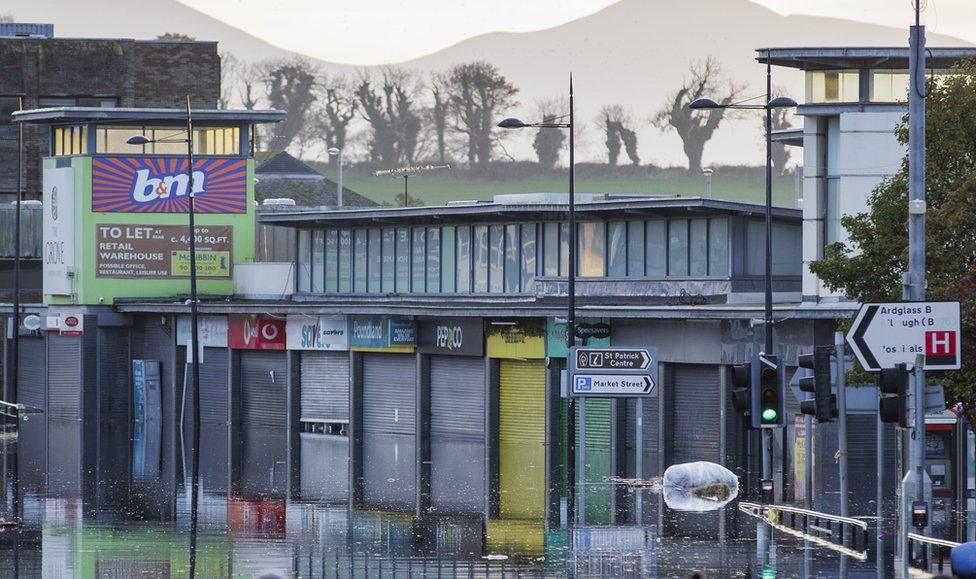
Floodwater has caused extensive damage to shops on Downpatrick's busiest retail street
"An exceptional natural event" is how Stormont's Department for Infrastructure described flooding in Downpatrick this week.
Also badly affected were Newry, Kilkeel, Portadown and Templepatrick, with many roads closed and waterlogged fields a common sight.
As the clean-up begins, we ask: is flooding becoming more common in Northern Ireland and what can we do about it?
First thing's first: who's at risk?
According to the Department for Infrastructure, 45,000 properties in Northern Ireland are at risk of flooding from rivers, sea or surface water.
Flood Maps NI, external has a historical flooding overlay. There is also a climate change overlay, based on the best available predictions. All of that data feeds into planning and preparation for floods.
What does that entail?
Flood waters recede but recovery takes longer - cleaning houses, redecorating, claiming on insurance if you're lucky enough to have it and even trying to find somewhere else to live or operate a business.
Northern Ireland's Flood Risk Management Plan, external talks about resistance and resilience.
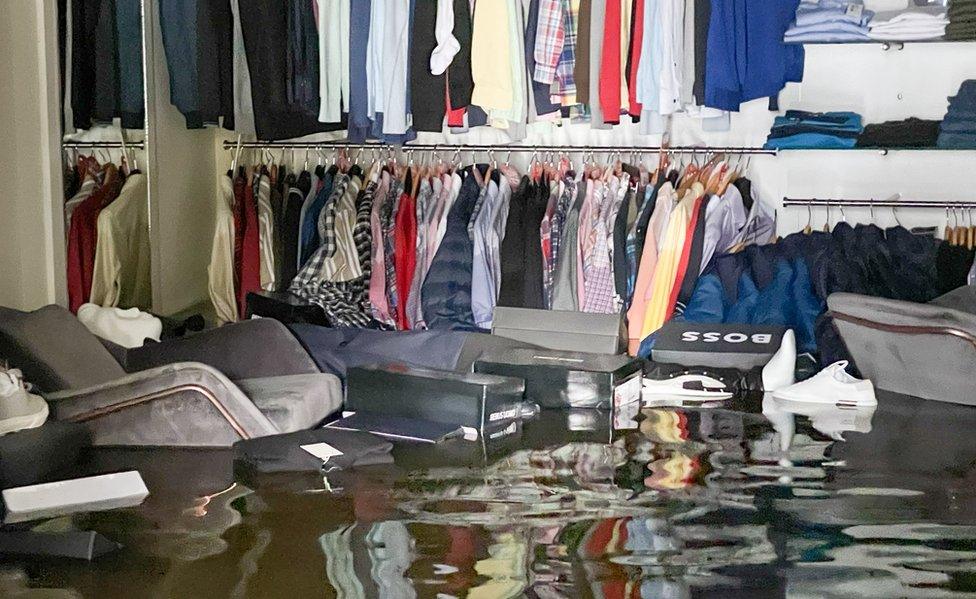
Clothing worth thousands of pounds was destroyed in a menswear shop as a result of the flood in Newry
Resistance covers actions like installing floodgates. Resilience is "bounce-back-ability" - how easy your property is to clean and dry out.
Neither of these is cheap and and when water is creeping in they will not be at the forefront of your mind.
But resistance and resilience apply for councils and government departments too - they can supply sandbag banks in high-risk areas and organise their distribution in an emergency.
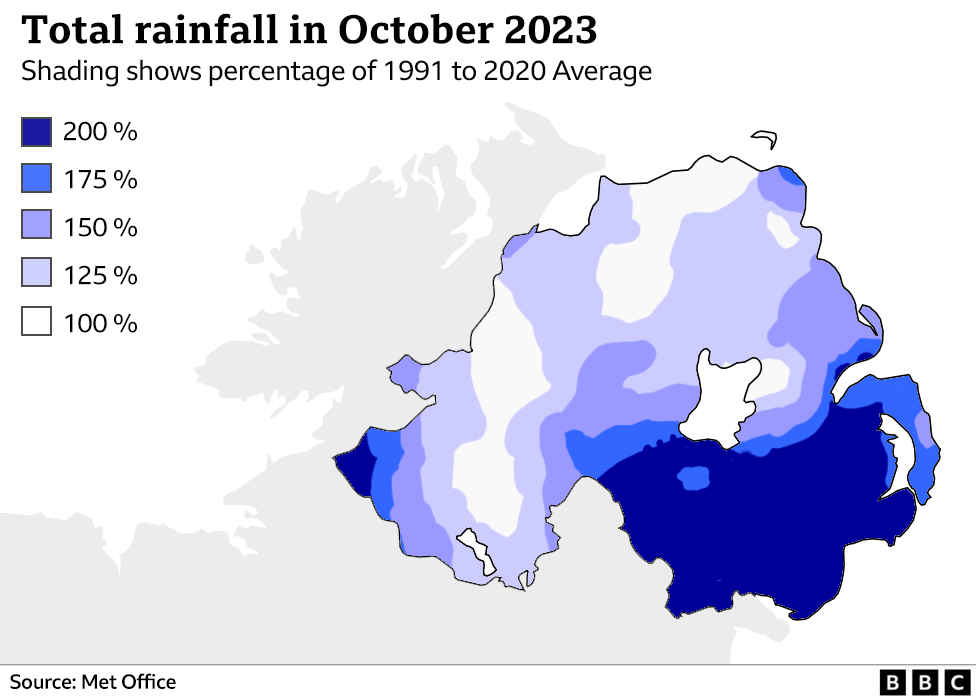
They can provide information when flooding is expected and help when it happens.
It's also about predicting where is at risk and what's needed if the worst happens.
So is flooding becoming more frequent?
When you have more than two centuries of weather records, changes become much clearer.
At Armagh Observatory, October 2023 has provided food for thought.
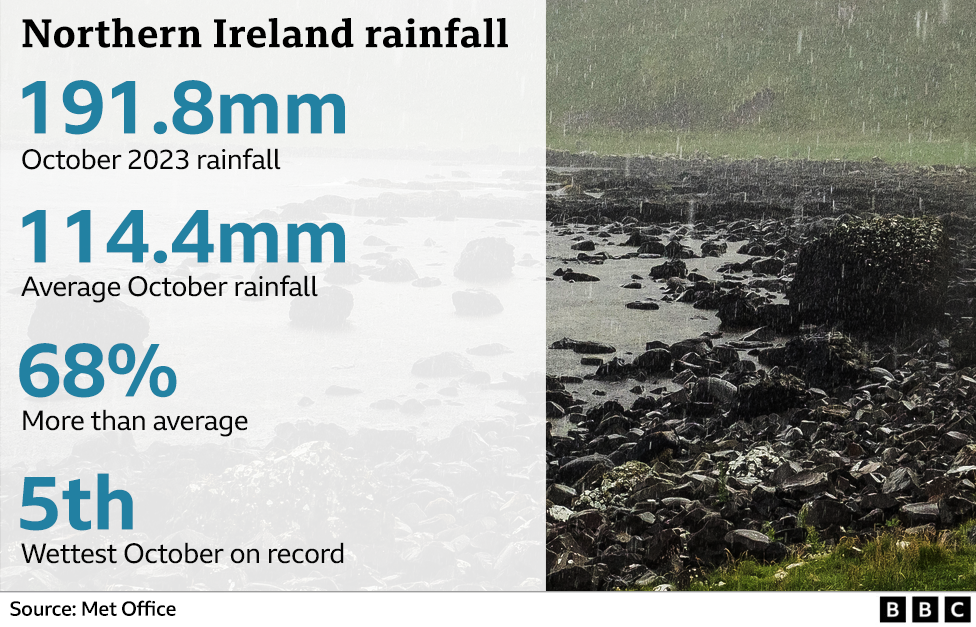
According to the observatory's measurements, last month was the wettest month ever - breaking a record that had stood since 1870.
Met Office records for Northern Ireland put last month fifth on the all-time list for the wettest Octobers.
It's hard to say for definite but warmer air holds more moisture so a warmer atmosphere will produce more rain - to quote observatory director Prof Michael Burton: "That's physics."
So can we blame climate change?
The atmosphere is warming, causing more rain, but human changes may also affect how likely flooding is.
Perhaps property has been built on a floodplain. A river's course may have been altered, affecting where and how quickly the water flows.
Northern Ireland is one of the least wooded parts of Europe, says the Woodland Trust - trees are nature's way of creating flood barriers and reducing soil erosion.
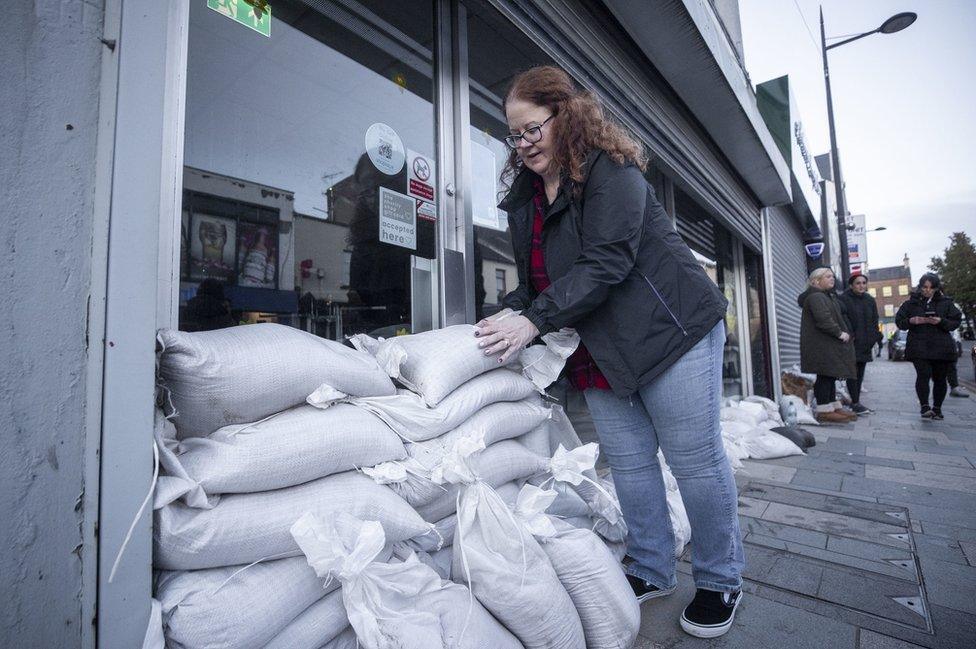
Many business owners have told BBC News NI that their insurance does not cover flooding
People may point to farming and its impact on our environment.
Yes, agriculture is the largest producer of greenhouse gases in Northern Ireland but farmers are also affected by extreme weather.
If fields are flooded, that can hamper productivity and slow down planting or ploughing and tilling.
The new Farm Support and Development programme, external includes emissions reduction, farming with nature, carbon benchmarking and increasing sustainability.


It's difficult to point to one single event and say: 'That's climate change' - it's a cumulative effect.
Data from the Armagh Observatory and weather stations all over Ireland has been analysed by researchers at the Icarus Climate Research Centre in Maynooth University.
It found clear signals of climate change - an increase in both rainfall and rainfall intensity, and an average temperature rise in Ireland of 0.88C for every degree of warming on a global scale.
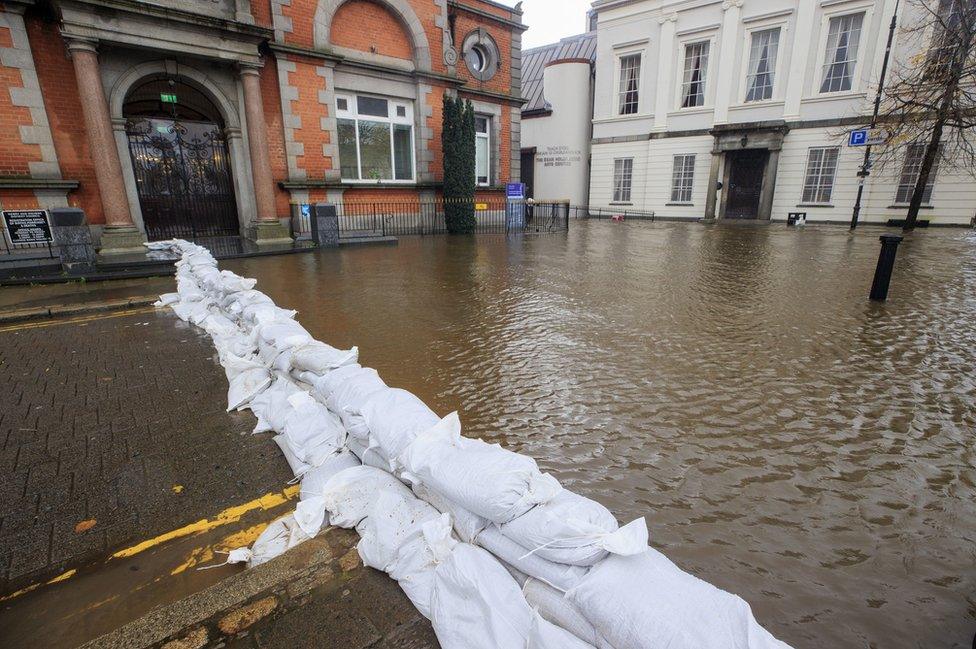
Stacks of sandbags can help hold back floodwater but are too little too late when floods are not anticipated
Prof Conor Murphy said that in some areas temperatures were increasing at an even higher rate.
In some places, winter rainfall intensity increased by as much as 20% and that, he said, meant an increased risk of flooding.
What about flood defences?
Look at Newry - it has flood walls dating back to the 19th Century but the floodwater breached those this week.
The Department of Infrastructure said it spent £22.7m on flood risk management projects, external in 2022-23.
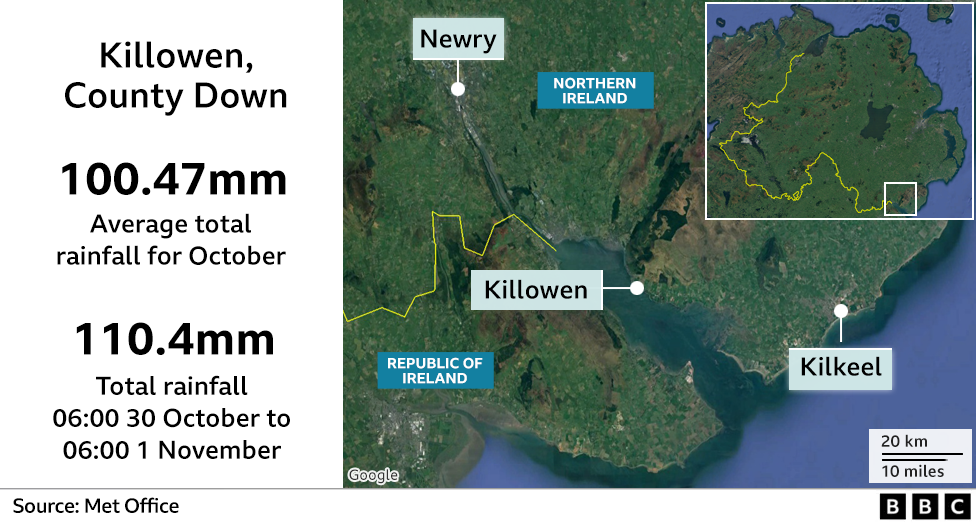
It said annual investment "of at least £30m" would provide a long-term solution, with £8m required for maintenance of existing flood management infrastructure.
Just £3m was spent on that maintenance in each of the past two years.
But that level of funding is not available in the 2023-24 budget "when balanced against the need to deliver other essential public services", so funding will therefore be directed where it has "the most impact".
Is there anything we can do?
These are big-picture issues that can appear beyond our control - it probably felt that way for everyone affected by flooding this week.
But modern climate change did not happen all at once - it happened one piece of coal, one felled tree, one uninformed choice at a time.
Tackling it will also be a choice for all of us - how we travel, what waste we produce, how we use energy, plant trees, protect peatlands and use our consumer power to make a change.
"People think it's just water but it's so scary" - Amanda Forsythe in east Belfast has a flood prevention wall in her garden after she "lost everything"
- Published3 November 2023
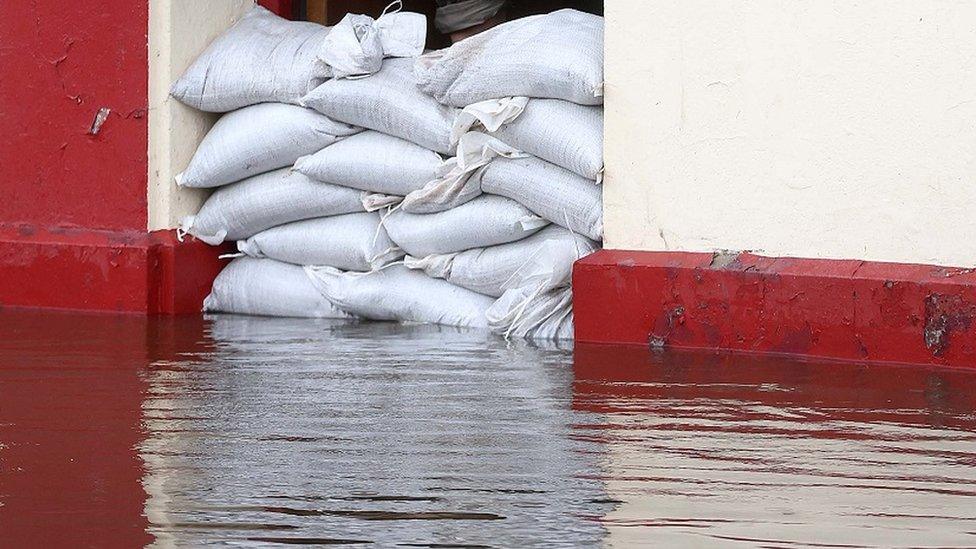
- Published1 November 2023
- Published3 November 2023
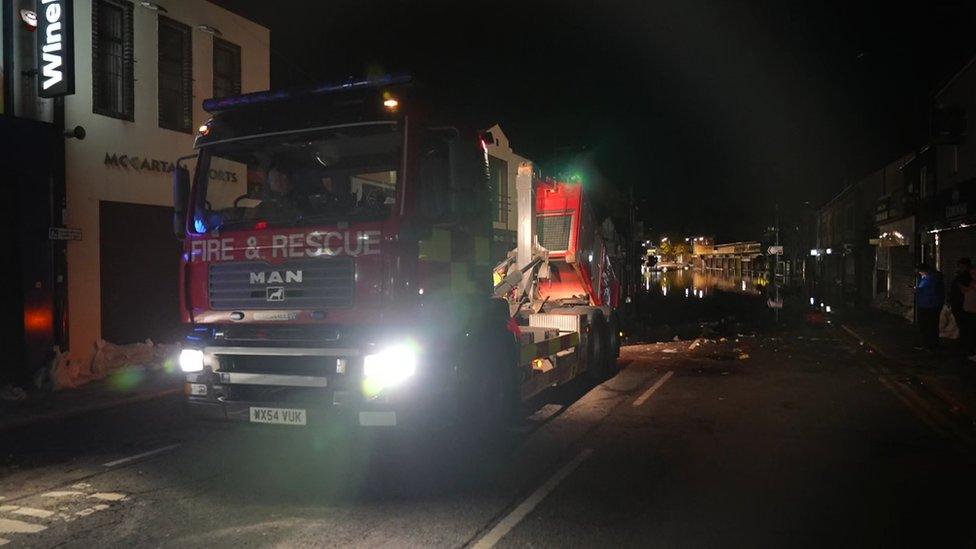
- Published13 November 2024
